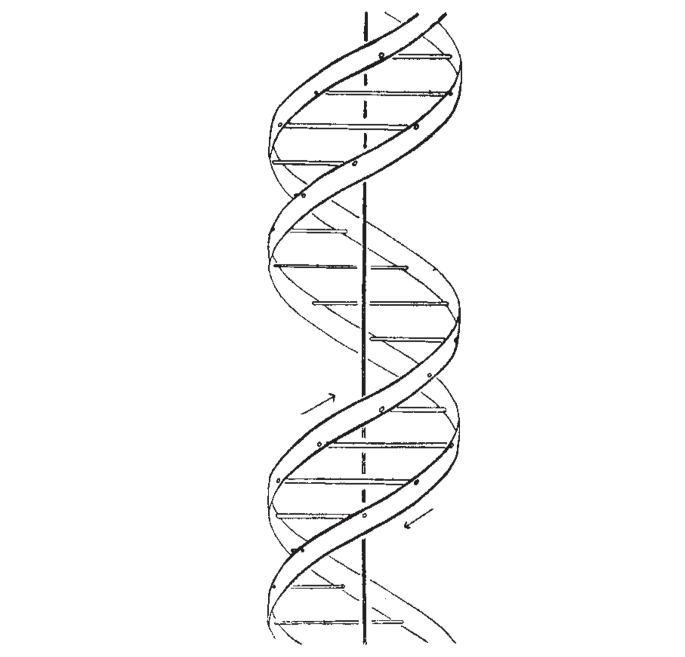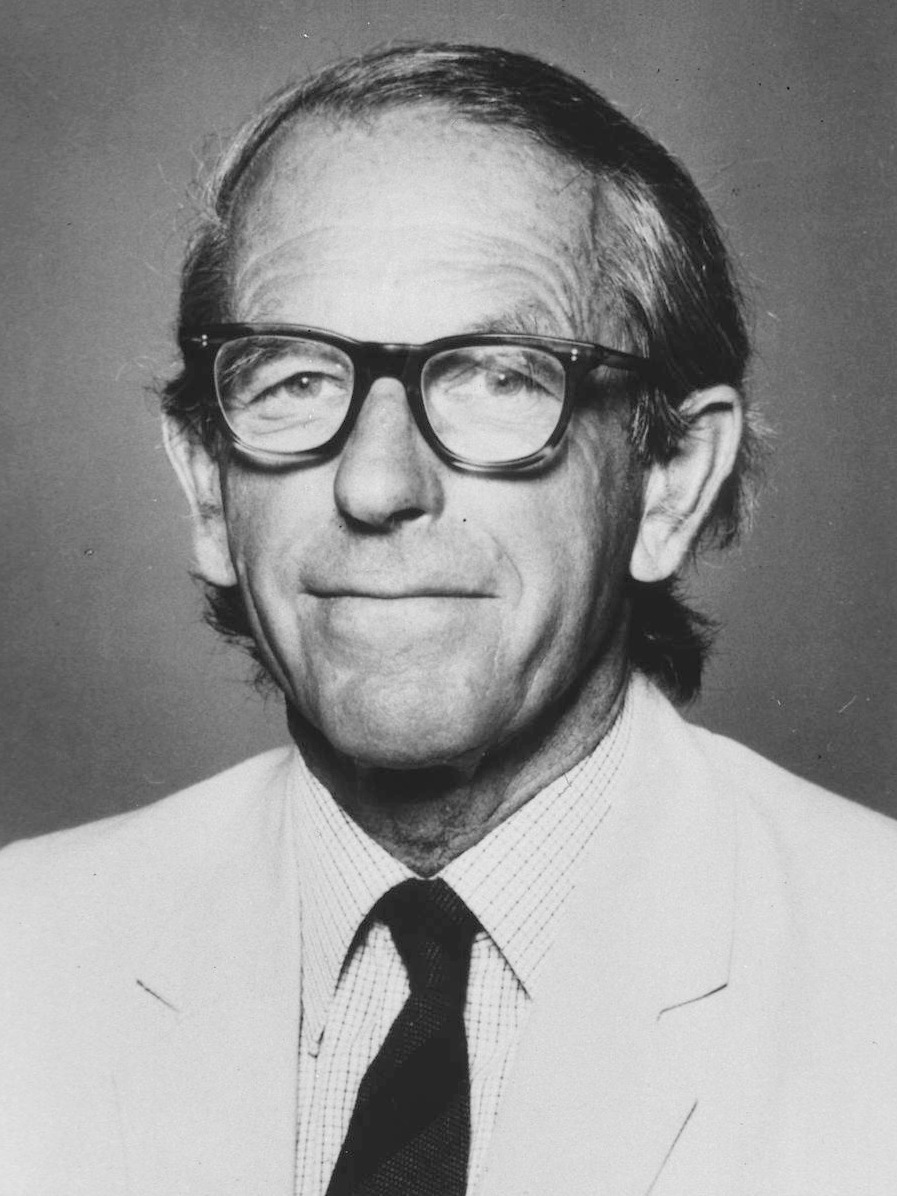A Structure for Deoxyribose Nucleic Acid Created 2025-06-12 Updated 2025-07-16
Starting line:The Eighth Day of Creation explains the "salt" part as that was the usual way to prepare DNA for X-ray crystallography, where something binds with the phosphate groups of DNA
We wish to suggest a structure for the salt of deoxyribose nucleic acid (D.N.A,). This structure has novel features which are of considerable biological interest.
The paper then shoots down other previously devised helical structures, notably some containing 3 strands or phosphate on the inside.
Then they briefly describe their structure, and promise more details on future articles. This was mostly a short one-page priority note.
Then they drop their shell bomb conclusion:
It has not es~aped our notice that the specific pairing we have postulated immediately suggests a possible copying mechanism for the genetic material.
Both Wilkins and Rosalind Franklin are acknowledged at the end.
Cavendish Professor of Physics Created 2025-06-17 Updated 2025-07-16
As beautifully put in The Eighth Day of Creation:
For more than a hundred years, the Cavendish Professorship has been the chair of experimental physics in the University of Cambridge. The man in that chair rules the university's research in physics. Indeed, for most of that hundred years the Cavendish Professor was preeminent in British science, with an authority that made him, as it were, the archbishop of physics
Frederick Sanger Updated 2025-07-16
Ah, this seems like a nice dude.
The Eighth Day of Creation has two nice paragraphs about his work. He was shy and quiet, and didn't boast about his slow and steady progress, possibly because of this he only had a junior fellowship and at some point some people wanted to kick him out of the lab somewhere between 1948 - 1952, quoted at: sandwalk.blogspot.com/2013/11/fred-sanger-1918-2013.html
Linus Pauling Created 2025-02-22 Updated 2025-07-16
The dude was a genius. He went mad later on, but he was a genius, that cannot be debated. He not only founded chemical physics, but then went ton to do structural biology with it.
Bibliography:
- The Eighth Day of Creation has a good summary of Pauling's achievements
Why Linus Pauling was the Smartest Quack in History by MQTate
. Source. Model protein Created 2025-06-17 Updated 2025-07-16
Ciro Santilli defines a "model protein" as a protein which has been significantly used in the history of protein science, in analogy to the term model organism.
Key characteristics of model proteins include:
- they are easy to obtain and are stable
- they are important to medical applications
- they are small and easier to understand for early studies
Important model proteins include:
- insulin: as a peptide hormone, this was small. Also it was useful and widely available even at pharmacies, The Eighth Day of Creation says you could get it a Boots, a major British pharmacy chain, and as such was a natural choice for the first sequencing by Frederick Sanger published in 1951
- hemoglobin
- keratin
Nobel disease Updated 2025-09-11
The Eighth Day of Creation has a related quote:
In a conversation a few weeks earlier at the faculty club of the Massachusetts Institute of Technology, a couple of biologists had speculated whether Pauling, whose recent popular book on the benefits to health and sanity of massive doses of vitamin C was stacked in display near the entrance of the M.I.T. bookstore, was showing signs of what one of the men called "old scientist's disease" - which they defined as what happens to great men when they grow beyond the psychological reach of the salutary system by which scientists blow the whistle on one another's mistakes.
The Nobel Prize Winners With Crazy Theories by Qxir
. Source. 

